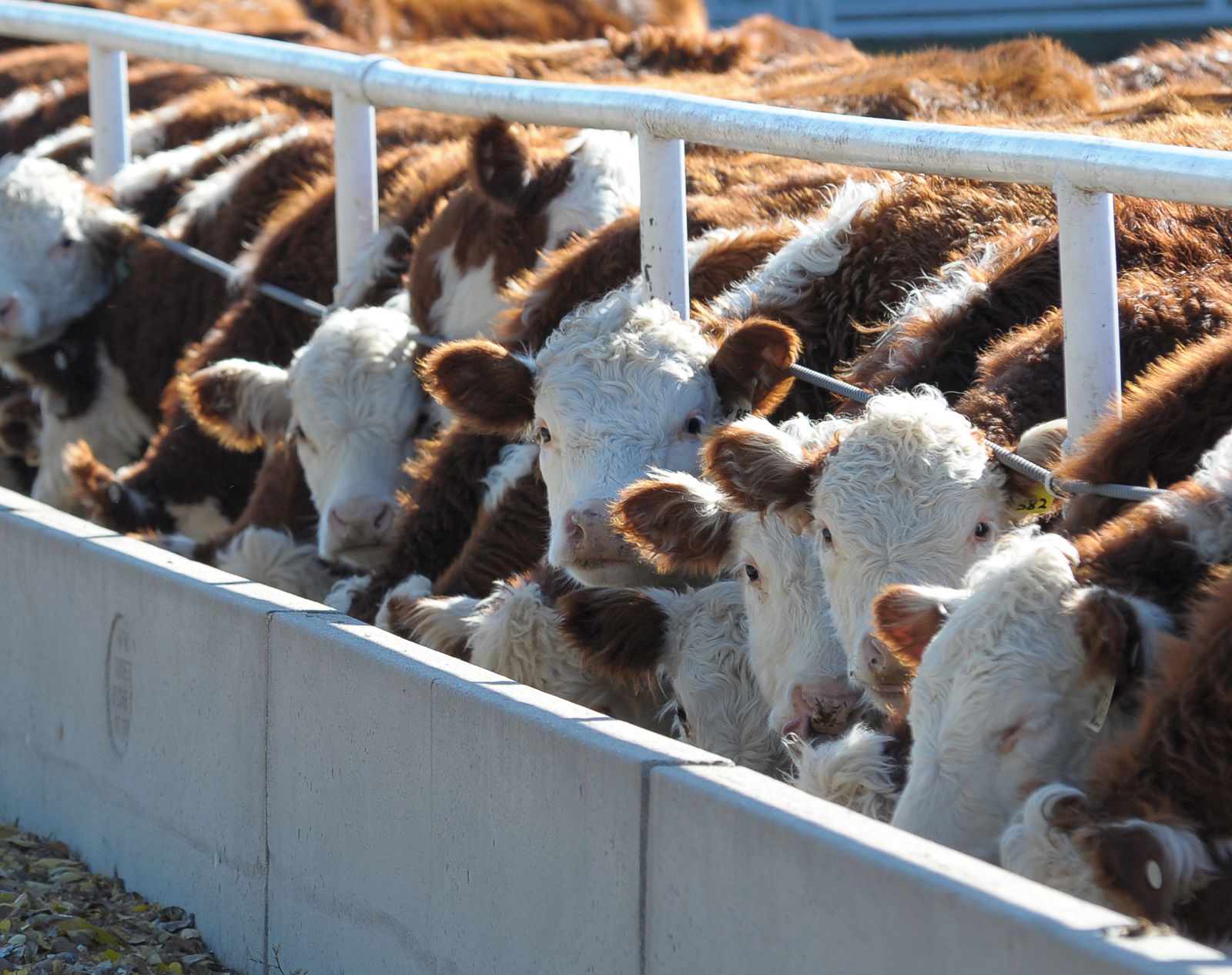Kansas State University agricultural economists and veterinary medicine faculty members have completed an analysis of the economic impact of treating groups of high health-risk animals with antimicrobials, and they think their findings will help to inform public debate on the topic.
Their work focused on the practice of metaphylaxis, or the mass treatment of a pen of high health-risk cattle to eliminate or minimize the onset of disease. According to the U.S. Department of Agriculture, metaphylaxis is used selectively by 59 percent of U.S. feedlots on 20.5 percent of all cattle placed on feed.
The use of antimicrobials in livestock production is under intense public scrutiny, with many major restaurants, food service companies, supermarkets and others pressuring producers to use fewer antibiotics.
“There’s a general sentiment and public policy concern about the use of antibiotics in animal production,” said Ted Schroeder, a livestock economist with K-State Research and Extension and University Distinguished Professor of agricultural economics. “Our study assessed the economic impacts on the beef cattle industry and on consumers of using metaphylaxis in the beef cattle industry.”
Their major finding: if metaphylaxis were eliminated in the U.S. cattle industry without suitable health management alternatives, it could cost that industry as much as $1.8 billion annually.
“We know that if metaphylaxis were not available, a reduction in revenue would result from reduced average daily gains, increased feed conversions, higher health costs from treating more sick animals, more deaths primarily for those high health-risk animals,” among other factors, said Elliott Dennis, a K-State doctoral student who worked on the study.
“That reduction in profitability would then be passed up and down the beef supply chain, ultimately resulting in higher prices for consumers to pay for beef at the supermarket. Consumers, when facing higher beef prices at the supermarket would then (choose) other meat products besides beef.”
The economists’ findings are based on data from 10 large Midwest feedlots in which they analyzed production and health management data from cattle that were classified as high health-risk and administered an antimicrobial upon entering the feedlot.
They classified animals into three weight categories to determine differences between treating high health-risk animals compared with those not treated.
They found that for 550-pound animals, producers would lose on average $104 per head by not treating those high health-risk cattle. For 700-pound animals, they would be expected to lose about $99, and for 850-pound animals, the losses would be $64 per head.
“We found that if metaphylaxis was not available for high health-risk cattle, it would reduce industry gross revenue by about 1 percent,” Dennis said. “That’s a sizable amount if metaphylaxis was not allowed to be used in feedlots on high health-risk cattle.”
Schroeder noted that removing metaphylaxis or any animal health management technology from feedlots has a snowball effect.
“A lot of that direct cost would be absorbed by the feedlot, but a very significant amount of it would go back to cow-calf producers who are supplying calves,” he said. “Even if they are supplying healthy calves, they are still going to be influenced because overall the feedlot sector’s costs get passed down because they are a margin-taker.”
“So it’s a very important issue not only for the feedlot sector, but for the cow-calf sector and consumers, as well.”
Dennis said the agricultural economists plan to continue their analysis, looking more closely at options that producers may have for using different types of metaphylaxis drugs, “and what happens if they took away certain drugs, but allowed other drugs to be present. Kind of get down to the producer decision level so that we could create a tool for producers to look at the options they have when it comes to metaphylaxis use.”
Schroeder said the current study and future work will nonetheless help to better inform those who make decisions regarding animal health management.
“These studies take a long time to do; there is considerable research analyst time to complete projects like this,” he said. “Our goal was to make sure that as such policy options are being debated that at least folks are informed about what kinds of economic impacts alternative strategies like this could entail.”
K-State’s study can be read online at http://www.agmanager.info/livestock-meat/cross-subject-areas/value-arrival-metaphylaxis-us-fed-cattle-industry.



